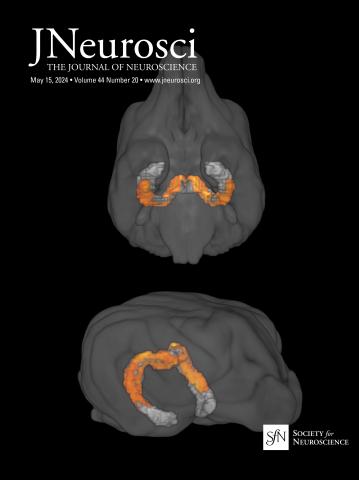Target selection signals causally influence human perceptual decision making.
IF 4.4
2区 医学
Q1 NEUROSCIENCES
引用次数: 0
Abstract
The ability to form decisions is a foundational cognitive function which is impaired across many psychiatric and neurological conditions. Understanding the neural processes underpinning clinical deficits may provide insights into the fundamental mechanisms of decision making. The N2c has been identified as an EEG signal indexing the efficiency of early target selection, which subsequently influences the timing of perceptual reports through modulating neural evidence accumulation rates. Evidence for the contribution of the N2c to human decision making however has thus far come from correlational research in neurologically healthy individuals. Here, we capitalised on the superior temporal resolution of EEG to show that unilateral brain lesions in male and female humans were associated with specific deficits in both the timing and strength of the N2c in the damaged hemisphere, with corresponding deficits in the timing of perceptual reports contralaterally. The extent to which the N2c influenced clinical deficits in perceptual reporting speed depended on neural rates of evidence accumulation. This work provides causal evidence that the N2c indexes an early, hemisphere-specific process supporting human decision making. This non-invasive EEG marker could be used to monitor novel approaches for remediating clinical deficits in perceptual decision making across a range of brain disorders.Significance Statement Understanding how particular brain processes contribute to decision-making is crucial for our treatment of psychiatric and neurological disorders. This study provides causal evidence linking deficits in speed of visual processing to specific well-delineated EEG signals representing early target selection and evidence accumulation, in individuals with brain lesions. By showing how these lesions disrupt perceptual decisions, this work identifies a potential biomarker for decision-making deficits. This EEG measure offers a promising, non-invasive tool to track and refine treatments aimed at restoring decision-making abilities in affected patients.目标选择信号对人的感知决策产生因果影响。
形成决策的能力是一种基本的认知功能,在许多精神和神经疾病中受到损害。了解支持临床缺陷的神经过程可能为决策的基本机制提供见解。N2c被认为是一种脑电图信号,它指示早期目标选择的效率,随后通过调节神经证据积累率影响感知报告的时间。然而,迄今为止,N2c对人类决策的贡献的证据来自对神经健康个体的相关研究。在这里,我们利用脑电图的高时间分辨率来显示,男性和女性的单侧脑损伤与受损半球N2c的时间和强度的特定缺陷有关,并在对侧感知报告的时间上存在相应的缺陷。N2c对临床知觉报告速度缺陷的影响程度取决于证据积累的神经速率。这项工作提供了因果证据,表明N2c指数是支持人类决策的早期半球特异性过程。这种非侵入性脑电图标记物可用于监测治疗一系列脑部疾病中知觉决策的临床缺陷的新方法。理解特定的大脑过程如何促进决策,对我们治疗精神和神经疾病至关重要。这项研究提供了因果证据,证明在脑损伤个体中,视觉处理速度的缺陷与特定的、描述良好的脑电图信号有关,这些信号代表了早期目标选择和证据积累。通过展示这些病变如何破坏感知决策,这项工作确定了决策缺陷的潜在生物标志物。这种脑电图测量提供了一种很有前途的、非侵入性的工具来跟踪和改进旨在恢复受影响患者决策能力的治疗方法。
本文章由计算机程序翻译,如有差异,请以英文原文为准。
求助全文
约1分钟内获得全文
求助全文
来源期刊

Journal of Neuroscience
医学-神经科学
CiteScore
9.30
自引率
3.80%
发文量
1164
审稿时长
12 months
期刊介绍:
JNeurosci (ISSN 0270-6474) is an official journal of the Society for Neuroscience. It is published weekly by the Society, fifty weeks a year, one volume a year. JNeurosci publishes papers on a broad range of topics of general interest to those working on the nervous system. Authors now have an Open Choice option for their published articles
 求助内容:
求助内容: 应助结果提醒方式:
应助结果提醒方式:


